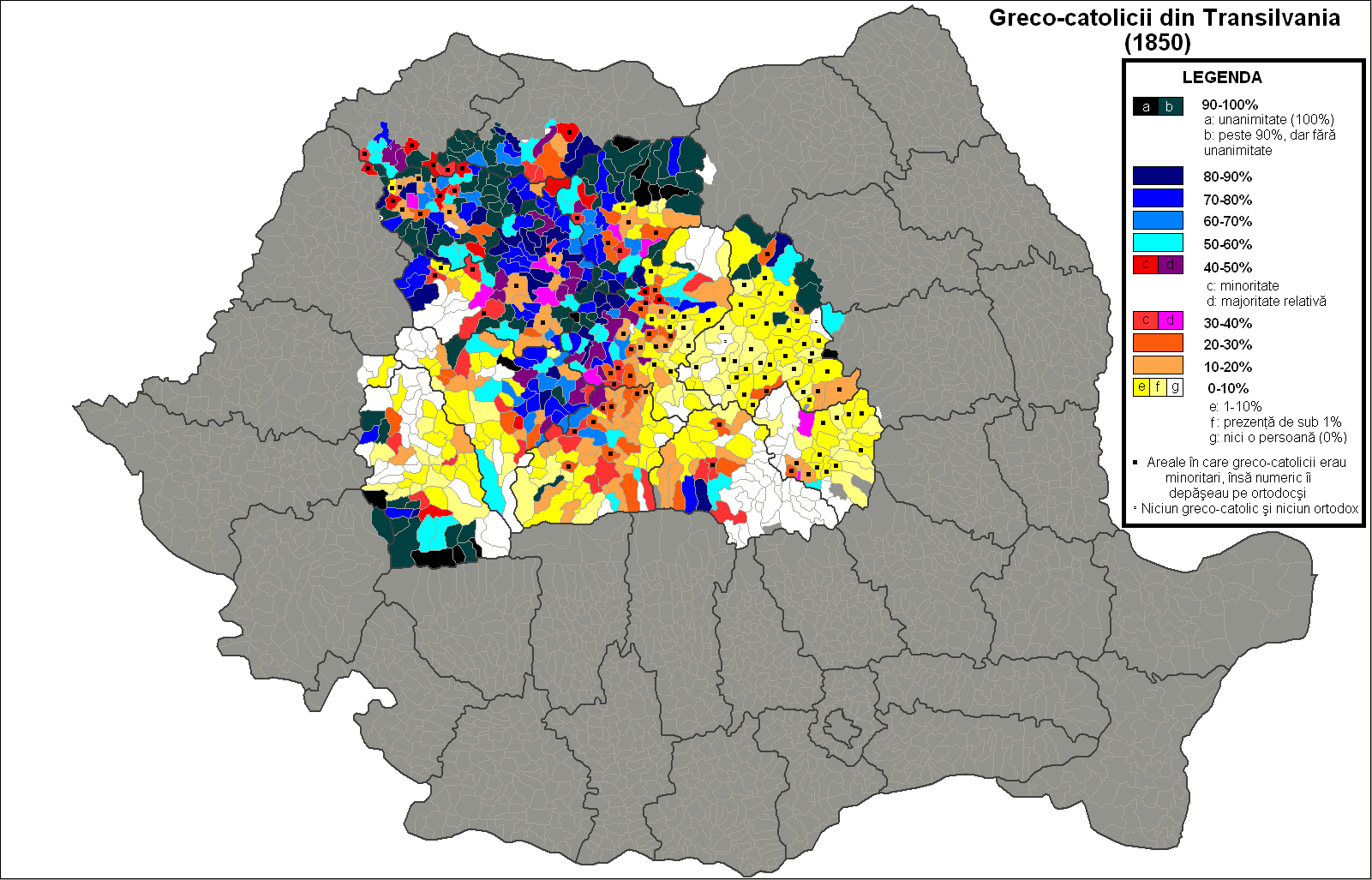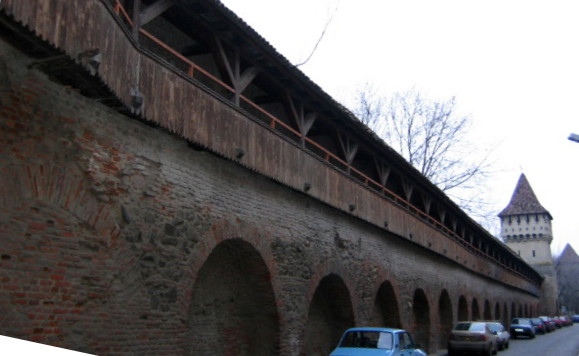|
Bazna
Bazna (; Transylvanian Saxon dialect: ''Baußen''; ) is a commune located in Sibiu County, Transylvania, Romania. It is composed of three villages: Bazna, Boian (''Bonnesdorf''; ''Bonnesdref''; ''Alsóbajom'') and Velț (''Wölz''; ''Welz''; ''Velc'' or ''Völc''). The route of the Via Transilvanica long-distance trail passes through the village of Bazna. Geography It lies northeast of Mediaș, within the catchment area of the Târnava Mică River. History Settled by Transylvanian Saxons in the 13th century, in the late 1870s the Bazna area became part of Austria-Hungary's Kis-Küküllő County, in the Dicsőszentmárton subdivision. Following the Union of Transylvania with Romania in 1918, its villages became part of the Kingdom of Romania. Demographics At the 2011 census, 66.7% of inhabitants were ethnic Romanians, 29.7% Roma, 2.6% Hungarians and 0.8% Germans. At the 2002 census, 86.6% were Romanian Orthodox, 4% Greek-Catholic, 3.6% Pentecostal, 2.2% Reformed, 1.4% B ... [...More Info...] [...Related Items...] OR: [Wikipedia] [Google] [Baidu] |
Sibiu County
Sibiu County () is a county () of Romania, in the historical region of Transylvania. Its county seat () is the namesake town of Sibiu (). Name In Hungarian, it is known as ''Szeben megye'', and in German as ''Kreis Hermannstadt''. Under the Kingdom of Hungary, a county with an identical name (Szeben County, ) was created in 1876. Demographics At the 2021 census, Sibiu county had a population of 388.326 residents and a population density of 71.48/sq.km(27,59sq.mi) At the 2011 Romanian census, 2011 census, the county has the following population indices: * Romanians – 91.25% (or 340,836) * Romani people in Romania, Romani – 4.76% (or 17,901) * Hungarians in Romania, Hungarians – 2.89% (or 10,893) * Germans of Romania, Germans (Transylvanian Saxons) – 1.09% (or 4,117) * Minorities of Romania, Other – 0.1% (or 640) At the 2021 Romanian census, 2021 census, the county has the following population indices: * Romanians – 93.36% (or 313,118) * Romani people in ... [...More Info...] [...Related Items...] OR: [Wikipedia] [Google] [Baidu] |
Mediaș
Mediaș (; , , Transylvanian Saxon dialect, Transylvanian Saxon: ''Medwesch''/''Medveš''/''Medwisch'', ) is the second largest municipiu, town and municipality in Sibiu County, Transylvania, central Romania. Geography Mediaș is located in the middle basin of Târnava Mare River, at from Sighișoara and from Blaj. The health resort Bazna, officially recognized for the first time in 1302, is from Mediaș. The health resort offers mineral water springs, rich in salts, mineral mud and a special type of salt, called "Bazna salt". The distance between Mediaș and the county's residence Sibiu is . The city administers one village, Ighișu Nou (''Eibesdorf''; ''Szászivánfalva''). History The first signs of human communities in the area are thought to be from the middle Neolithic period. The name of the city comes from the Hungarian word meggy (sour cherry). The Romanian name originates in the German version, which comes from the Hungarian name (Medgyes). In the 13th ce ... [...More Info...] [...Related Items...] OR: [Wikipedia] [Google] [Baidu] |
Via Transilvanica
Via Transilvanica 'The Transylvanian Trail' is a hiking trail that crosses the Transylvania, Bukovina and Banat regions of Romania, and is meant to promote their cultural, ethnic, historical and natural diversity. It was built between 2018 and 2022, with its design and conception heavily inspired by historical pilgrims' ways and hiking trails, such as The Way of St. James and The Appalachian Trail. Starting at Putna, Suceava County, it stretches over , 10 counties of Romania, over 400 communities, and 8 UNESCO World Heritage sites, ending in Drobeta-Turnu Severin, Mehedinți County. Its motto is "The road that unites". History The trail was envisioned by the non-governmental organisation ''Tășuleasa Social'', based in Bistrița-Năsăud County. The way marking of trail was done in five major stages between the years 2018 and 2022: * In 2018, the first of trail was marked in Bistrița-Năsăud county. * In 2019, of trail was marked in Suceava County and in Mehedin ... [...More Info...] [...Related Items...] OR: [Wikipedia] [Google] [Baidu] |
Villages With Fortified Churches In Transylvania
The Transylvania region of Romania has one of the highest concentrations of existing fortified churches from the 13th to 16th centuries. It has more than 150 well preserved fortified churches of a great variety of architectural styles (out of an original 300 fortified churches). Listed as a UNESCO World Heritage Site, Villages with Fortified Churches in Transylvania are seven villages (six Transylvanian Saxons, Saxon and one Székelys, Székely) founded by the Transylvanian Saxons. They are dominated by fortified churches and characterized by a specific settlement pattern that has been preserved since the Late Middle Ages.Villages with Fortified Churches in Transylvania. UNESCO World Heritage Centre 1992-2010 The list The seven villages listed as a UNESCO World Heritage Site: ...
|
Lutheran
Lutheranism is a major branch of Protestantism that emerged under the work of Martin Luther, the 16th-century German friar and Protestant Reformers, reformer whose efforts to reform the theology and practices of the Catholic Church launched the Reformation in 1517. The Lutheran Churches adhere to the Bible and the Ecumenical Creeds, with Lutheran doctrine being explicated in the Book of Concord. Lutherans hold themselves to be in continuity with the apostolic church and affirm the writings of the Church Fathers and the first four ecumenical councils. The schism between Roman Catholicism and Lutheranism, which was formalized in the Diet of Worms, Edict of Worms of 1521, centered around two points: the proper source of s:Augsburg Confession#Article XXVIII: Of Ecclesiastical Power., authority in the church, often called the formal principle of the Reformation, and the doctrine of s:Augsburg Confession#Article IV: Of Justification., justification, the material principle of Luther ... [...More Info...] [...Related Items...] OR: [Wikipedia] [Google] [Baidu] |
Romanian Church United With Rome, Greek-Catholic
The Romanian Greek Catholic Church or Romanian Church United with Rome is a ''sui iuris'' Eastern Catholic Church, in full union with the Catholic Church. It has the rank of a Major Archbishop, Major Archiepiscopal Church and it uses the Byzantine Rite, Byzantine liturgical rite in the Romanian language. It is part of the Major Archiepiscopal Churches of the Catholic Church that are not distinguished with a patriarchal title. Cardinal Lucian Mureșan, Archbishop of Greek Catholic Archdiocese of Făgăraș and Alba Iulia, Făgăraș and Alba Iulia, has served as the head of the Romanian Greek-Catholic Church since 1994. On December 16, 2005, as the ''Romanian Church United with Rome'', the Greek-Catholic church was elevated to the rank of a Major Archiepiscopal Church by Pope Benedict XVI, with Lucian Mureșan becoming its first major archbishop. Mureşan was made a cardinal, at the papal consistory, consistory of February 18, 2012. Besides the Archeparchy of Făgăraș and Alba ... [...More Info...] [...Related Items...] OR: [Wikipedia] [Google] [Baidu] |
Pentecostal Union Of Romania
The Pentecostal Union of Romania () or the Apostolic Church of God () is Romania's fourth-largest religious body and one of its eighteen officially recognised religious denominations. At the 2021 census, some 404,000 Romanians declared themselves to be Pentecostalism, Pentecostals (2.1% of the population). Ethnically, as of 2002, they were 85.2% Romanians, 10.6% Roma minority in Romania, Roma, 1.9% Ukrainians of Romania, Ukrainians, 1.8% Hungarians in Romania, Hungarians and 0.5% belonged to other groups. They have 1,343 churches, 7,879 affiliates and 354 pastors,"Uniunea Penticostală" , at the Ministry of Culture and Religious Affairs (Romania), Ministry of Culture and Religious Affairs [...More Info...] [...Related Items...] OR: [Wikipedia] [Google] [Baidu] |
Reformed Church In Romania
The Reformed Church in Romania (; ) is a Calvinist denomination and the largest Protestant church in Romania. The majority of its followers are of Hungarian ethnicity and Hungarian is the main church language. The large majority of the Church's parishes are in Transylvania; according to the 2021 census, 495,380 people or 2.6% of the total population belong to the Reformed Church. About 95% of the members were of Hungarian ethnicity. The religious institution is composed of two bishoprics, the Reformed Diocese of Királyhágómellék and the Reformed Diocese of Transylvania. The headquarters are at Oradea and Cluj-Napoca, respectively. Together with the Unitarian Church of Transylvania and the two Lutheran churches of Romania (the Evangelical Lutheran Church in Romania and the Evangelical Church of Augustan Confession), the Calvinist community runs the Protestant Theological Institute of Cluj. Doctrine The church adheres to the: Creeds * Apostle Creed *Nicene Creed ... [...More Info...] [...Related Items...] OR: [Wikipedia] [Google] [Baidu] |
Baptist Union Of Romania
The Union of Christian Baptist Churches in Romania () is a Baptists, Baptist Christian denomination in Romania. It is affiliated with the Romanian Evangelical Alliance, the European Baptist Federation and the Baptist World Alliance. The headquarters is in Bucharest. History Origins The first modern-era Baptists in Romania were of German extraction. Karl Scharschmidt came to what is now Wallachia, southern Romania from Kingdom of Hungary (1526–1867), Hungary in 1856 and settled in Bucharest. Scharschmidt, a carpenter by trade, had been baptized by Johann Gerhard Oncken in Hamburg in 1845. By 1863 enough converts had been made to form a church, and Oncken sent August Liebig to serve them as pastor. This church, the oldest Baptist church in Romania, in still in existence and meets on Popa Rusu Street (Bethany Baptist Church). Russian Baptist immigrants, mostly from the southern Ukraine, came to Dobruja around 1862 and founded a church in :ro:Cataloi, Tulcea, Cataloi in 1869. Hunga ... [...More Info...] [...Related Items...] OR: [Wikipedia] [Google] [Baidu] |
Sibiu
Sibiu ( , , , Hungarian: ''Nagyszeben'', , Transylvanian Saxon: ''Härmeschtat'' or ''Hermestatt'') is a city in central Romania, situated in the historical region of Transylvania. Located some north-west of Bucharest, the city straddles the Cibin River, a tributary of the Olt River. Now the seat of Sibiu County, between 1692 and 1791 and 1849–65 Sibiu was the capital of the Principality of Transylvania. Until 1876, the Hecht hause in Sibiu served as the seat of the Transylvanian Saxon University. Nicknamed ''The Town with Eyes'' for the eyebrow dormers on many old buildings, the town is a popular tourist destination. It is known for its culture, history, cuisine, and architecture. In 2004, its historical center was added to the tentative list of UNESCO World Heritage Sites. Sibiu was subsequently designated the European Capital of Culture in 2007, along with Luxembourg City. One year later, it was ranked "Europe's 8th-most idyllic place to live" by ''Forbes''. Sibi ... [...More Info...] [...Related Items...] OR: [Wikipedia] [Google] [Baidu] |
Romanesque Architecture
Romanesque architecture is an architectural style of medieval Europe that was predominant in the 11th and 12th centuries. The style eventually developed into the Gothic style with the shape of the arches providing a simple distinction: the Romanesque is characterized by semicircular arches, while the Gothic is marked by the pointed arches. The Romanesque emerged nearly simultaneously in multiple countries of Western Europe; its examples can be found across the continent, making it the first pan-European architectural style since Imperial Roman architecture. Similarly to Gothic, the name of the style was transferred onto the contemporary Romanesque art. Combining features of ancient Roman and Byzantine buildings and other local traditions, Romanesque architecture is known by its massive quality, thick walls, round arches, sturdy pillars, barrel vaults, large towers and decorative arcading. Each building has clearly defined forms, frequently of very regular, symmetrical ... [...More Info...] [...Related Items...] OR: [Wikipedia] [Google] [Baidu] |







